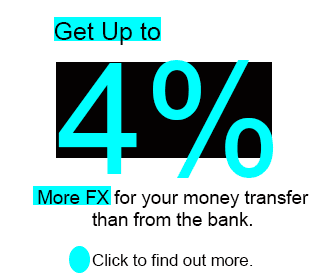Euro-Dollar Hits 1-month High, France Vote Risks Underappreciated
- Written by: Sam Coventry

Image © Adobe Stock
The Euro to Dollar exchange rate scaled its highest level in more than a month in midweek trade and holds most of these gains heading into Friday's U.S. job report and Sunday's French election, which still poses a downside risk.
"The U.S. dollar suffered its biggest daily drop in three weeks yesterday and Treasury yields edged closer to 3-month lows whilst equities remained close to their all-time highs. Why? A string of weaker-than-estimated US economic data, particularly from the services sector – the engine of US economic growth, reinforced the case for the Federal Reserve to start cutting rates in September," says George Vessey, Lead FX Strategist at Convera.
The ISM services PMI read at 48.8% in June, a level that signals a contraction in activity, down from 53.8% in May. This was a significant surprise to investors as the consensus was expecting a still solid outcome at 52.5%. This is the lowest value the index has recorded since the coronavirus collapse in spring 2020.

"The ISM index for the manufacturing sector has already been stuck at a low level for some time, the poor service sector figure completes the picture of a US economy that is not humming along as well as it was recently," says Ulrich Leuchtmann, Head of FX and Commodity Research at Commerzbank.
With the odds of a September interest rate cut from the Fed rising, the Dollar has fallen and allowed the Euro a run higher heading into Sunday's French second-round vote.
Foreign exchange market action suggests investors have turned relatively sanguine on the matter of French risks. We wonder, therefore, if there is now a higher chance of an adverse market reaction to any surprises.
Above: EUR/USD at four-hour intervals. Track EUR with your own alerts, find out more here.
Since Sunday's first round of elections, 221 third-placed candidates have withdrawn from the race in an effort to prevent Marine Le Pen's Rassemblement National (RN) party from winning a majority. 94 three-way races and one four-way race are still expected to take place.
"EUR/USD was little moved near 1.0790. The decision of anti‑National Rally (RN) parties to tactically pull their candidates out of the second round of the election reduces the chance of the RN forming a majority government," says Carol Kong, a foreign exchange strategist at Commonwealth Bank of Australia.
However, there remains a degree of uncertainty as many centrist voters will be asked to choose between a far-left option and a far-right option, given many centrists from Emmanuel Macron's party have pulled out of the race.
"It remains to be seen if votes will follow the voting instructions from anti‑NR party leaders or choose to abstain which can swing the outcomes significantly. The rising prospect of a hung parliament is supporting EUR because it makes a large expansion in the budget deficit less likely," says Kong.
The most recent poll by Ifop - released midweek - revealed that 37% of French voters want the National Rally to win an absolute majority of seats in the national assembly on Sunday. This is greater than the vote share they secured in the first round (33.15%).
"Whatever the result, it is clear that France will be more difficult to govern," says Arne Christian Rahner, Head of Financial Markets at Berenberg Bank. "The outlook due to the upcoming political change of direction in France continues to threaten the EUR with headwinds. However, it should be noted: After elections, uncertainty tends to decrease and volatility falls - often regardless of the outcome."
Berenberg anticipates the Euro to fall to 1.0655 in the short-term time frame.
Friday's Stumbling Block
Ahead of Sunday's vote result, Euro-Dollar will contend with the Friday release of the all-important U.S. job report for June.
Should the data undershoot expectations, the Euro can extend recent gains against the Dollar.
"With regards to Friday’s jobs report, if we combine the manufacturing and service sector ISM employment numbers (and weight them 25%/75%), we are at levels historically consistent with non-farm payrolls FALLING 175k, not rising 190k as the consensus predicts for Friday," says James Knightley, an economist at ING Bank.
The Department of Labor reported on Wednesday that the number of Americans filing new claims for unemployment benefits increased last week by 4K to a seasonally adjusted 238K. The consensus expectation was for a more modest 235K.
U.S. Federal Reserve Chair Jerome Powell said on Tuesday that there was an opportunity to cut interest rates if the labour market deteriorated. This was a hint that the Fed would be open to a rate cut before inflation had moderated to the 2.0% target.
This means the onus is falling on the jobs market to deliver the interest rate cut many U.S. households, businesses and investors crave.





